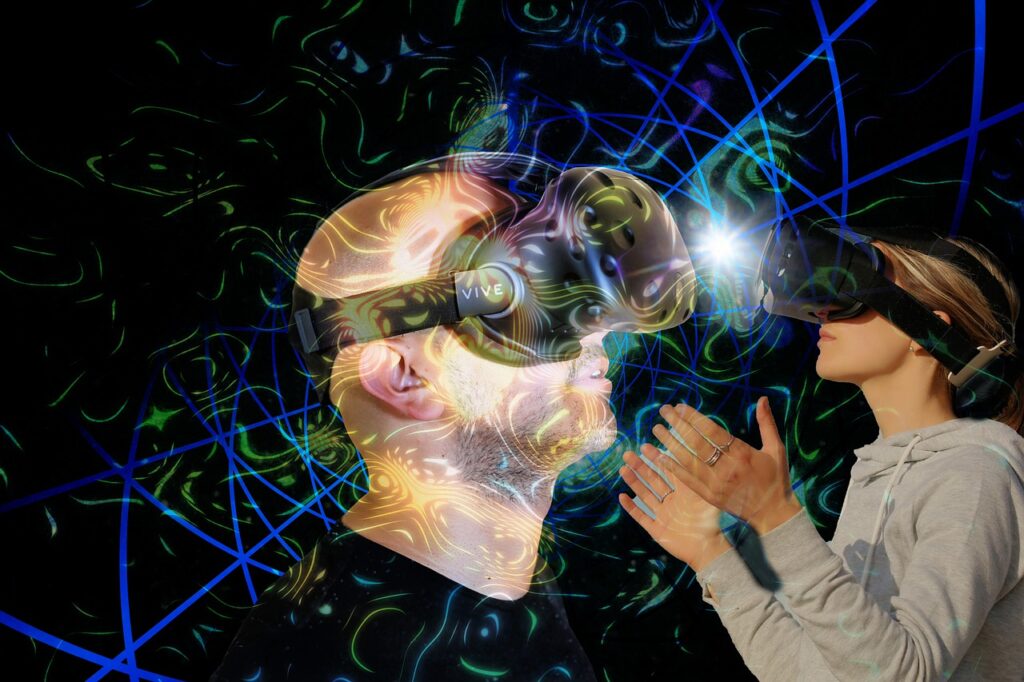Instructional technology has been an integral part of education for many years. It can be used to enhance student learning in a variety of ways. Instructional technology is an umbrella term encompassing a variety of digital tools that can be used in the classroom to enhance student learning. These tools include but are not limited to, educational software, online resources, and mobile apps.
While there are many different types of instructional technologies available, they all share a common goal: to help teachers and students alike maximize the potential of the digital age for learning. And resources that can be used in the classroom to improve student learning. While there are many different types of instructional technology.
Instructional technology examples
If you’re looking for instructional technology examples that will amaze and inspire, you’ll love these five. All of them are incredibly useful, easy to use, and can help your students learn in a variety of ways. Instructional technology is used in a variety of ways in today’s classrooms. Some teachers use it to enhance their lessons, while others use it to replace traditional teaching methods. Regardless of how it is used, instructional technology can be a powerful tool for educators and students alike.
Another popular use of instructional technology is through digital textbooks. By using electronic textbooks, students have access to more content and multimedia than they would with traditional textbooks.
One way that instructional technology is being used in the classroom is through online learning platforms. These platforms allow students to learn at their own pace and from anywhere in the world. They also provide teachers with a way to track student progress and identify areas where students may need additional help. In this article, we will explore some examples of how instructional technology is being used in the classroom today.
Example 1: Virtual Reality in the Classroom
In recent years, virtual reality (VR) has become more and more popular. It can be used for gaming, entertainment, and even work. Some people may think that VR is only for adults, but that’s not true. VR can also be used in the classroom. VR can be a fun and exciting way for students to learn. It can help them learn in a new and different way. VR can also help them learn more quickly and easily. Virtual reality is one of the most in-demand instructional technology examples.
There are many ways that VR can be used in the classroom. For example, teachers can use VR to help students learn about different places around the world. Teachers can also use VR to help students learn about different jobs and careers. VR can also be used to help students learn about science and math.
Virtual Reality in the Classroom is a new and innovative way to teach students. It allows them to be engaged in the material in a whole new way. VR can take them on virtual field trips, let them explore different parts of the world, and even help them learn about history. In addition, VR can help with hands-on learning by letting students use 3D models and simulations.
Imagine a world where you could transport yourself to any destination in the blink of an eye. A world where information is at your fingertips and you can explore any corner of the globe, without ever having to leave your seat. This world is not a figment of your imagination, it’s virtual reality. VR has made its way into the classroom and is changing the way students learn. Virtual reality has the potential to revolutionize education, but it is not without its challenges. With an ever-increasing amount of content available, students are no longer so focused on reading and writing.
Example 2: Google Docs for Collaborative Learning
Google Docs can be used for a variety of purposes, one of which is collaborative learning. Collaborative learning involves students working together to learn a topic or complete a project. There are many benefits to using Google Docs for collaborative learning. One advantage is that it allows students to work together regardless of their location. Students can also work on the same document at the same time, which encourages collaboration. Additionally, Google Docs provides a forum for students to share ideas and discuss topics. This can help students learn from one another and develop critical thinking skills.
Google Docs has made its significant place in instructional technology examples. Google Docs is a great way to collaborate with others in real-time. You can share a document with classmates or colleagues and work on it together. Everyone can make changes and see them instantly. Google Docs is also a great way to take notes in class. You can create a document for each class and share it with your classmates. Then you can all take notes together and never lose track of what was said in class. Google Docs also makes it easy for teachers to monitor student progress and give feedback.
Example 3: Flipped Classrooms
A flipped classroom is one in which the traditional lecture and homework elements of a course are reversed. Students watch lectures and complete homework assignments online, outside of class, while class time is devoted to interactive activities and projects. Critics charge that the flipped classroom model is not always feasible and that it can deprive students of important instructor feedback.
Flipped classrooms are becoming more popular in schools across the United States. Teachers who use this method of teaching allow students to watch video lectures and complete homework assignments at home, and then use class time for hands-on activities and projects. Proponents of flipped classrooms say that this approach helps students better understand complicated topics since they can take their time to watch lectures and complete homework assignments without feeling rushed. Critics of the flipped classroom model say that it takes away from the traditional face-to-face interaction between teacher and student. Critics also argue that the flipped classroom places an undue burden on students, who must take on additional work outside of class.
Example 4: Augmented Reality
Augmented Reality is an interactive experience in instructional technology examples of a real-world environment where the objects that exist in the real world are augmented by computer-generated perceptual information. AR typically involves the use of a head-mounted display or handheld device that provides a view of the physical world combined with overlaid digital content. The digital content can be text, 2D or 3D graphics, audio, or video.
In recent years, there has been an increase in the use of augmented reality, or AR, in both personal and professional settings. This technology uses digital information to enhance or alter what a person sees in the real world. AR can be used for a variety of purposes, including entertainment, education, and work. There are many different types of AR applications, and the technology is continuing to evolve. While there are some concerns about the safety and privacy of AR technology, it is clear that this is a growing industry with many potential benefits.
Augmented Reality is an upcoming technology that blurs the line between the physical and digital worlds. With Augmented Reality, users can see digital information overlaid onto the real world. This can be done through a device such as a smartphone or a pair of glasses. Augmented Reality is already being used in some industries, such as manufacturing and design. It is also being used in education, tourism, and health care. Augmented reality apps such as Aurasma can be used to bring textbooks, worksheets, and other print materials to life with interactive content.
Example 5: Robotics and Coding
With the world becoming more and more reliant on technology, students need to learn how to code and operate robots. Robotics and coding allow students to create programs that control the robots’ movements and actions. Coding is a form of communication that allows humans to talk to machines, while robotics gives students the ability to build things that can move and respond to their commands.
As technology advances, so does the way we educate our children. With coding and robotics classes, students can learn problem-solving and critical thinking skills that will help them in any field they choose to pursue. Robotics and coding allow students to work together as a team, be creative, and have fun while learning.
It is no wonder that robotics and coding have become such popular topics in Instructional technology examples. Robotics allows applying their mathematics and engineering skills, while coding helps students develop problem-solving abilities and creativity. When used together, robotics and coding can help students become better thinkers and innovators.
Instructional technology has revolutionized the way students learn. It enables educators to provide a more personalized and interactive learning experience for their students.
Instructional technology has revolutionized the process of learning and teaching. It has redefined the methods by which people interact with educational content. Instructional technology has also created new channels for the dissemination of information. The benefits of instructional technology are numerous and widespread. Instructional technology examples include: making education more accessible, engaging students in learning, promoting collaboration among students, and helping educators personalize instruction. Additionally, instructional technology can help educators save time while teaching.







Comments are closed.